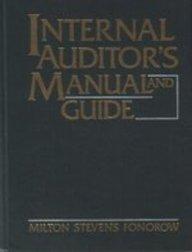Question
Please build the answer in your own words based on flowing text from studding book (provide the example): text from book: Group Term Life Insurance
Please build the answer in your own words based on flowing text from studding book (provide the example):
text from book:
Group Term Life Insurance Plans.
Many employers offer group term life insurance as part of their employee benefit package. Life insurance coverage is normally calculated as a multiple of the employees annual salary, rounded up to the nearest thousand ($1,000.00). The premiums paid by the employer for coverage under a group term life insurance policy are considered a taxable benefit to the employee. If the employer shares the premium cost with the employee, for example, the employer pays half and the employee pays half, then the taxable benefit would only be the portion of the premiums the employer pays, or 50%. Group term life insurance taxable benefit calculations are based on the premium rates and sales taxes the employer pays and the amount of coverage provided. Premium rates are expressed per $1,000.00 of coverage on a monthly basis. The taxable benefit must be calculated on a pay period basis for inclusion in the employees taxable income.
The following formula calculates the employees monthly taxable benefit:
Coverage amount = Annual salary x coverage multiplier Round coverage amount up to nearest $1,000.00 Monthly taxable benefit = Coverage amount x premium rate $1,000.00 To ensure that the benefit is included in the employees income as it is earned or enjoyed, the monthly benefit must be annualized and then prorated on a pay period basis, as follows: Pay period taxable benefit = Monthly taxable benefit x 12 Pay period frequency
"Example: Rhonda Golds life insurance coverage, through her employers group plan is two times her annual salary of $30,300.00. Her employer pays the insurer 100% of the cost of her life insurance coverage at a premium rate of $1.00 per $1,000.00 of coverage per month. Rhonda is paid on a weekly basis; her taxable benefit is calculated as follows: Coverage amount = Annual salary x coverage multiplier Round coverage amount up to nearest $1,000.00 = ($30,300 x 2) = $60,600.00 = $61,000.00 (rounded) Monthly taxable benefit = coverage amount x premium rate $1,000.00 = $61,000 x $1.00 $1,000.00 = $61.00"
Group Sickness and Accident Insurance Plans.
These are group plans that provide employees with income for a period of time, should the employee be away from work for reasons of sickness or accident. A group plan is generally one that provides coverage to a class or association of employees. There can also be multiple plans for a group of employees, for example, one plan for clerical staff and one for management staff. The types of sickness and accident insurance plans considered in this category include:
? short term disability plans (wage loss replacement, weekly indemnity)
? long term disability plans
? accident insurance plans (accidental death and dismemberment)
If an employer pays the premiums for group short-term or long-term disability plans there is no taxable benefit implication for the employee, however employer-paid accidental death and dismemberment (AD&D) premiums are considered a non-cash taxable benefit. As a result, employer-paid AD&D premiums, plus the 8% RST (Manitoba and Ontario), the 9% tax on insurance premiums (Qubec) and the 6% PST (Saskatchewan) as applicable, are considered pensionable for C/QPP contributions and taxable for federal and provincial income taxes. Employer-paid premiums for a non-group plan are considered a non-cash taxable benefit in all jurisdictions. A non-group plan is one that generally does not cover a group or association of employees. For example, if the organization pays the premiums for a long-term disability plan for only the president of the organization, this would be considered a non-cash taxable benefit to the president. When the benefit is taxable it is also pensionable for C/QPP contributions; however, as it is a non-cash benefit, it is not insurable, and no EI or QPIP premiums are deducted. GST and HST are not included in the value of this type of benefit, but the provinces of Manitoba, Ontario, Qubec and Saskatchewan assess sales tax on AD&D insurance premiums.
Question : Your organization, located in Manitoba, will be enhancing the group benefits plan offered to employees in two months by adding accidental death and dismemberment (AD&D) coverage and vision care coverage. The organization will pay 50% of the cost of the AD&D premiums and 50% of the cost of the vision care premiums, with the employees paying the other 50% of each premium. The Manager of Finance, Laura Bruce, has requested that you, as the Payroll Supervisor, prepare a communication for the employees, explaining how these new benefits will impact their net pay.
(200 350 words)
Step by Step Solution
There are 3 Steps involved in it
Step: 1

Get Instant Access to Expert-Tailored Solutions
See step-by-step solutions with expert insights and AI powered tools for academic success
Step: 2

Step: 3

Ace Your Homework with AI
Get the answers you need in no time with our AI-driven, step-by-step assistance
Get Started


